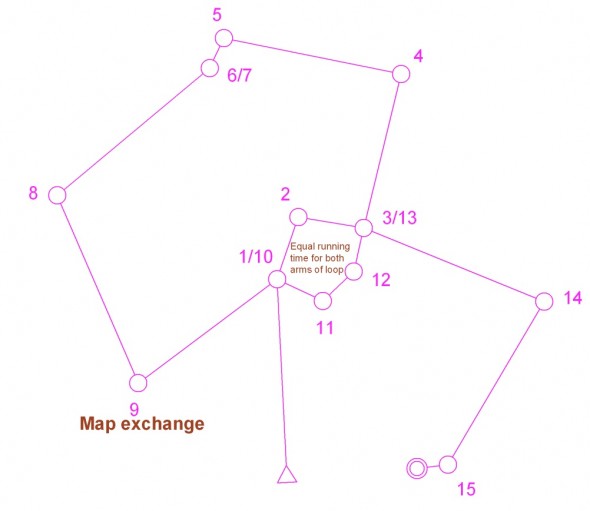
In many events, even at championships level, the results have been heavily influenced by runners not running completely independently. Co-working, and to some extent following is a major problem in orienteering, and has been for a long time. Different types of separating methods have been tried to separate runners to prevent or reduce ollowing, co-working and collaboration during orienteering events.
An extensive report looking into separating methods has been written – and can be found below.
Technical Committee of the Norwegian Orienteering Federation
In seven out of the last ten World Championships it has been possible to gain a medal if you started 2 minutes ahead of the winner and followed him (or her) to the finish
The report was initiated by the Technical Committee of the Norwegian Orienteering Federation, and authored by Bernt Myrvold, Jan Kocbach and Henning Spjelkavik, all three members in the Technical Committee of the Norwegian Orienteering Federation when the work started. A reference group consisting of Mats Troeng (Sweden), Martin Lerjen (Switzerland), Graeme Ackland (Great Britain), Jarkko Ryppö (Finland), Kjell Blomseth (Norway), Emil Wingstedt (Foot-O Athletes Commission), Björn Persson (IOF) have contributed with many useful comments during several phases of the work. The work on the report has been supported by the IOF.
Spreading techniques for world class runners
The main target for the report was to look at spreading techniques for world class runners – in particular to avoid that top class competitors are together for several legs, leading to one (or both) of the runners gaining an unfair advantage as a consequence of this.
There is a lot of interesting content here – I’ll come back with more articles on the topics covered later. For now just a few excerpts from the discussion – and of course the complete report with appendices below.
About start interval
In seven out of the last ten World Championships it has been possible to gain a medal if you started 2 minutes ahead of the winner and followed him (or her) to the finish (ref. section 6.1). Increasing the start interval to 3 minutes would reduce the number of instances to four. With a start interval of 2 minutes and a single instance of a spreading method splitting the field in two, there is actually no spreading method at all for runners starting 4 minutes apart. This was exemplified in WOC 2009 long distance in the men’s category, where the runners winning gold and bronze were together before the butterflies, throughout the butterflies and after the butterflies.
The qualification race should ideally not be significantly easier technically than the final
Due to the obvious effectiveness of increasing the start interval to reduce grouping, the method should not simply be dismissed without considering its implications in depth. For example, the approach used in other sports – defining a larger start interval for the best part of the start field (ref section 6.1) – is one option that should be considered. This must not necessarily be a big disadvantage from a TV point of view based on how the production is planned (e.g. this could be compatible with a production concept where the first part of the transmission is recorded, and only the last part of the race is broadcasted as a live production).
The start order in the final does also have impact on the grouping (ref. section 7 for examples and discussion). Simpler orienteering for the long qualification race than for the long final may lead to “weaker” orienteers with a good qualification race obtaining a good start position in the finals. This is typically not a good situation (ref section 7). Thus, the qualification race should ideally not be significantly easier technically than the final.
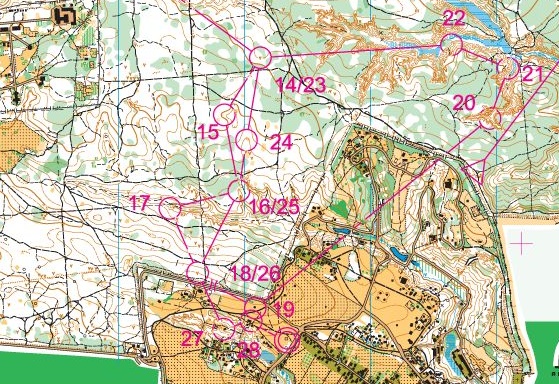
Phi-loop type separating technique used in Ukraine. One of the best spreading methods applied in the World Orienteering Champs the last years. Unfortunately it was not spectator-friendly in its implementation due to difference in running time which spectators where not informed about.
About Separating techniques
There have been several non-ideal implementations of butterflies in previous world championships
The state-of-the-art methods to avoid grouping during the last years are butterflies (cf. section 6.4) and the last years also phi-loops (cf. section 6.5). In addition course planners have had some focus on optimizing course characteristics (cf. section 6.3). The other separating methods discussed in section 6 do currently not seem to be able to replace butterflies / phi-loops for the WOC long distance, and therefore the discussion in the current section is focused on implementing the state-of-the-art spreading method in an optimal way rather than discussing the alternatives.
As discussed in sections 6.4, 6.5 and 7 above, there have been several non-ideal implementations of butterflies (and partly phi-loops) in previous world championships,
- Butterflies with sharp angles have let runners see other runners more easily and speed up – making them less worth as a spreading method. Some butterflies have even let runners aproaching the center control of the butterfly see runners leaving the butterfly. Phi-loops have less problems with sharp angles than butterflies.
- The butterflies have been too short. Short butterflies do not split packs – they only put constraints on the planning which again may lead to more packs due to less long legs and nothing gained by the butterflies.
- The butterflies/phi-loops have not always been implemented in the most tricky terrain. The weak runners in H-packs tend to increase the speed in the butterfly in order to be able to catch up with the better runners from the pack – the risk for them making mistakes if the orienteering is tricky in the spreading method is then increased. Also, low visibility in the area of the spreading method is an advantage..
Short butterflies do not split packs – they only put constraints on the planning which again may lead to more packs due to less long legs and nothing gained by the butterflies.
- In some cases the butterflies/phi-loops have been followed by short legs instead of long legs – and in forest with good visibility. Continuing with a short leg after the butterfly increases the chance for regrouping of the same runners. One should ideally use a long leg straight after the spreading (butterfly or phi-loops), and if possibly there should be low visibility at the start of the long leg straight after the butterfly.
- In some cases the course has started with short technical controls – increasing the chances for grouping – followed by long legs. Long route choice legs are not good for splitting up groups which have already been formed – but rather are a tool to avoid groups to be formed. A course should start with long legs to avoid groups being formed early in the course.
- The terrain chosen for the long distance has not always been optimal with regard to avoiding groups to be formed. For optimal spreading, there should be different options on the long legs. This, however, also often depends on the terrain. This should be taken into account when choosing terrain for world orienteering championships and world cup races over the long distance.
Focus in the coming championships must be to avoid these “mistakes” of previous championships while developing the state-of-the-art of spreading methods further.
Full report
You can either see the report and appendix embedded below, or download them as PDF files here:
- Main Report: Separating runners in Orienteering
- Graphs and Figures: Separating runners in Orienteering
- Appendix: Separating runners in Orienteering
- The maps are not available for download due to file size – use the embedded version below or download via SlideShare.
 World of O News
World of O News
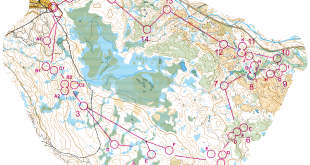
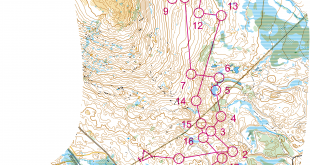
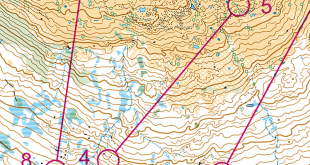
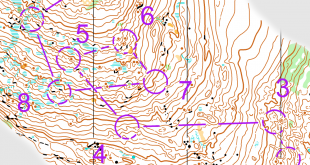
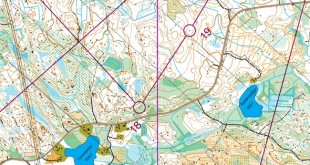
Thank you very much to the authors.
I have only started to read this report, but I am very impressed with the quality of work. We can’t expect any better. True, I already reached the same primary conclusions without rigorous analysis, but I am learning here as well. I only hope that the reasoning and documentation presented here gets through to those who matter, the future course setters and controllers.
Really good job!
I think that the first thing have to be done is 3 minutes start interval and 5 minutes interval between separate starting groups “red” group, “yellow” group “green” group and “white” group, each packed with 10 runners (40 in total, instead of 50 now).
Also more attention must be devoted to the qualification races. Starting order- strictly by following of rating restricting the choices of federations.
In qualification races- normally 2 minutes interval, but for top 20 in each heat of three- 3 minutes!
All those “butterflies” and “farsts” are making worse life for spectators- they can’t follow the real distance times because of different length of legs between time taking controls. If we respect WOC just as a place for “harvesting” of medals this is minor problem. If we respect orienteering as attractive and challenging outdoor sports for everyone (spectators, fans, children, families etc., than this is more than important.
Thanks!